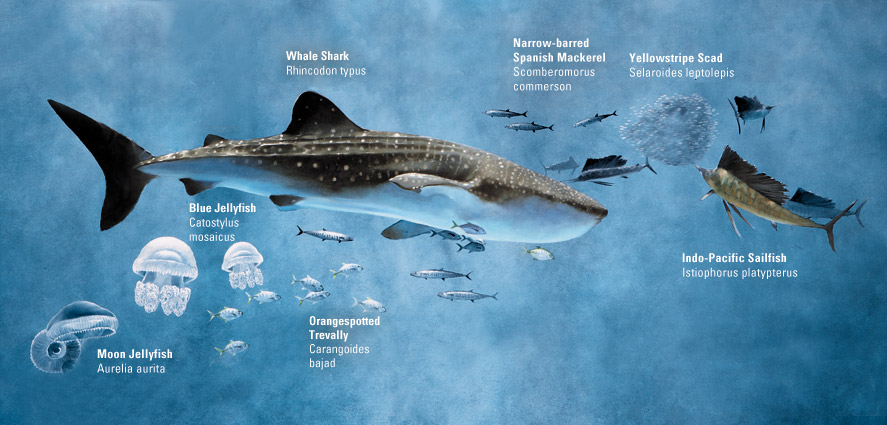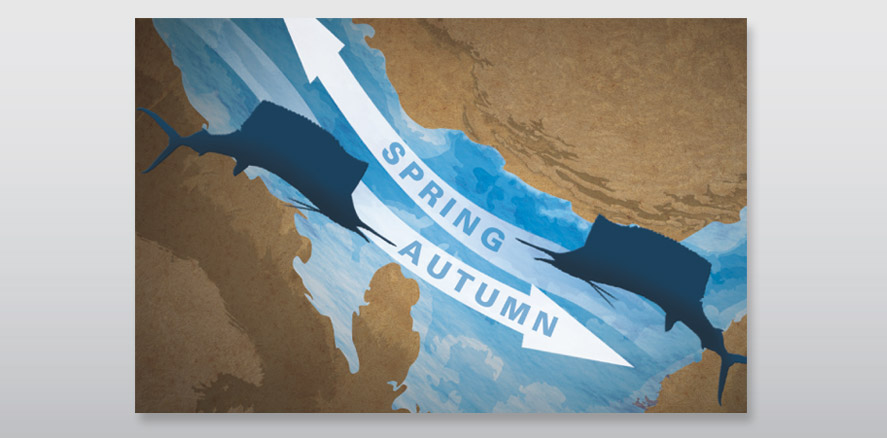
You are in :
Offshore Waters

Offshore Waters
The offshore marine environment in the Gulf is extensive and quite diverse. It contains a rich and increasingly rare variety of species ranging from the microscopic to the truly massive, all playing integral roles within the marine ecosystem. The Arabian Gulf offers a unique and challenging environment for its deep water inhabitants. These range from the microscopic ‘forests' of phytoplankton converting the sun's energy into food; the ‘grazers' that harvest the plankton, including small jellyfish and massive whale sharks; and finally, predatory creatures such as sharks, dolphins and sailfish that use stealth, speed and strategy to hunt their prey. The relative numbers of species may be quite small but the interdependent web of life sustained within the deep waters of the Gulf is intricate and essential to the vitality of the entire sea.
Beware of Harmful Algal Blooms
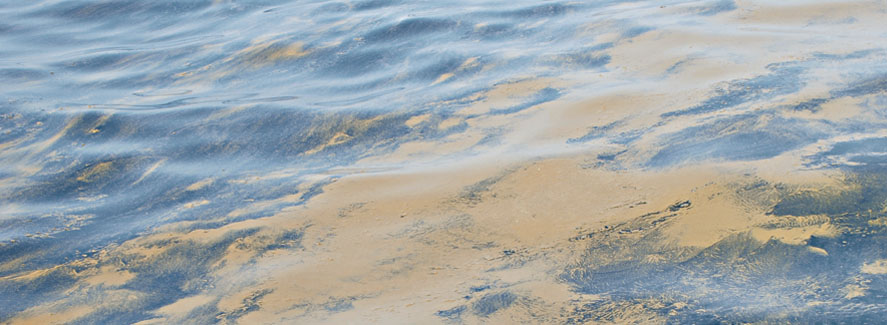
Commonly known as algae, phytoplankton are usually a healthy green colour. Changing conditions in the environment, however, can cause rapid deterioration into a heavy green, brown, yellow or red discolouration with the appearance of an oil slick. This is termed a Harmful Algal Bloom (HAB) that has negative impacts on other marine organisms and even humans. Sometimes known as ‘red tides', HABs can stretch for many kilometres and are especially damaging to marine life in the shallower waters prevalent along the Abu Dhabi coast. Under such conditions, HABs deplete the dissolved oxygen in water and release toxins, resulting in mass fish kills and serious economic losses for fisheries.
Lungs of the Ocean - Phytoplankton Revealed
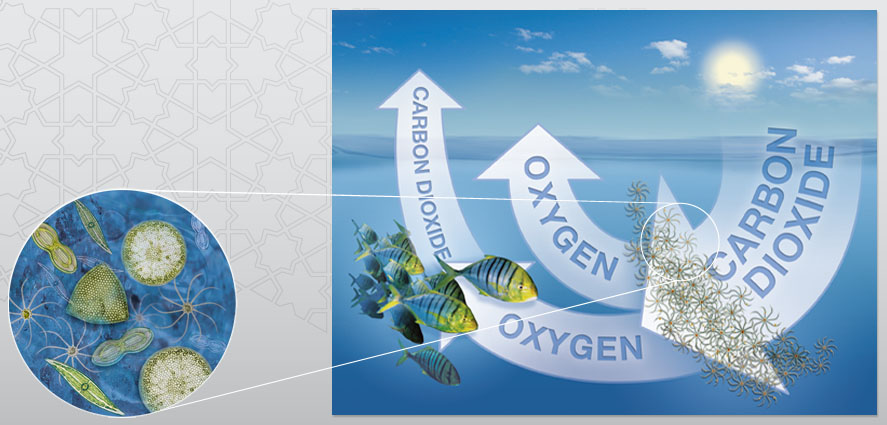
Phytoplankton are microscopic single cell tiny plants that might not seem very important, but they are probably the most critical component of the ocean food web. During food production (photosynthesis) using sunlight as their source energy, they fix carbon dioxide (CO2) into organic compounds. During this process, these microscopic plants consume large amounts of carbon dioxide from atmosphere and release oxygen. It has been estimated that phytoplankton produce more than half of the oxygen we breathe. Since the phytoplankton are removing carbon dioxide and releasing oxygen into the atmosphere, they are sometimes referred to as lungs of the ocean.
Deadly Invaders
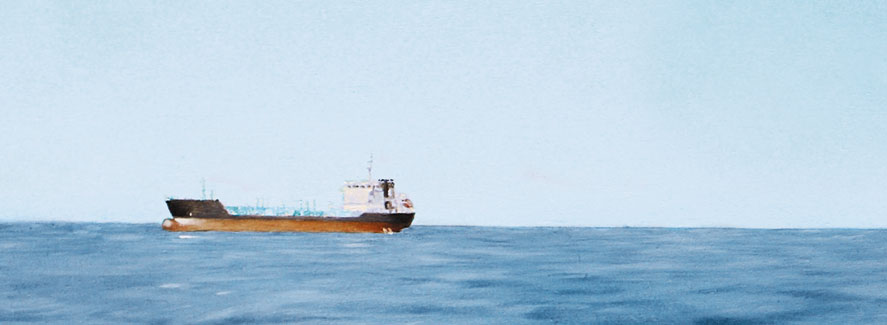
The heavy reliance on ship transport from overseas has resulted in many marine pests arriving in the Gulf. The adverse impacts of invasive species are not only ecological but also economic, amounting to billions of dirhams of losses to fisheries and aquaculture alone, including costly efforts to eradicate and mitigate often persistent and devastating effects. Every year, an estimated 400,000 to 750,000 cubic metres of ballast water and other oily water is discharged from tankers and ships that enter Arabian Gulf waters, potentially releasing harmful invaders such as alien fish and jellyfish, crabs, toxic phytoplankton, worms and shellfish.
Indo-Pacific Bottlenose Dolphin
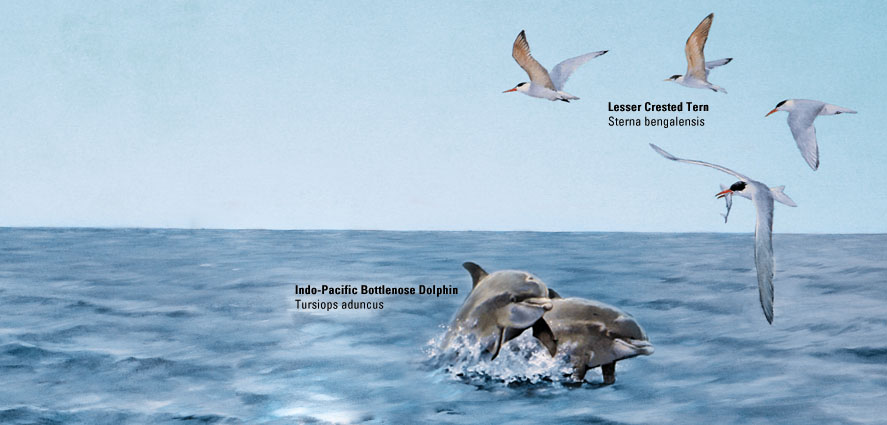
Curious, gentle and social, the Indo-Pacific bottlenose dolphin (Tursiops aduncus) is the most common cetacean in the Gulf waters, making up about 70% of groups and individual marine mammals. Recognisable by their elongated snout or rostrum, bottlenose dolphins travel in groups or ‘pods' ranging from a few to several hundred individuals and will often swim alongside the bow of a moving boat. Their practice of ‘porpoising' or leaping out of the water while swimming can be dramatic and is thought to improve efficiency of locomotion.
Sailfish Distribution and Migration
